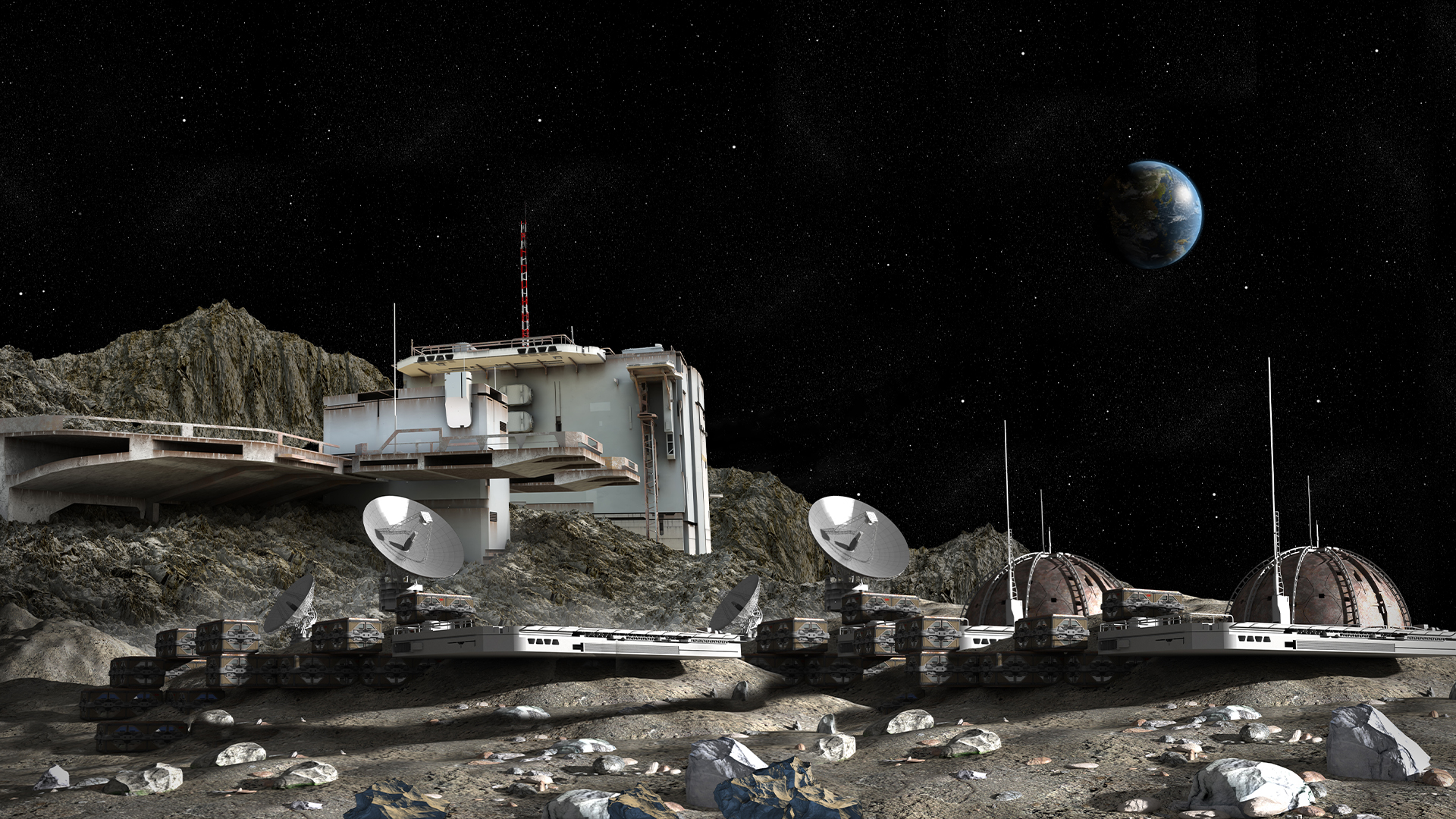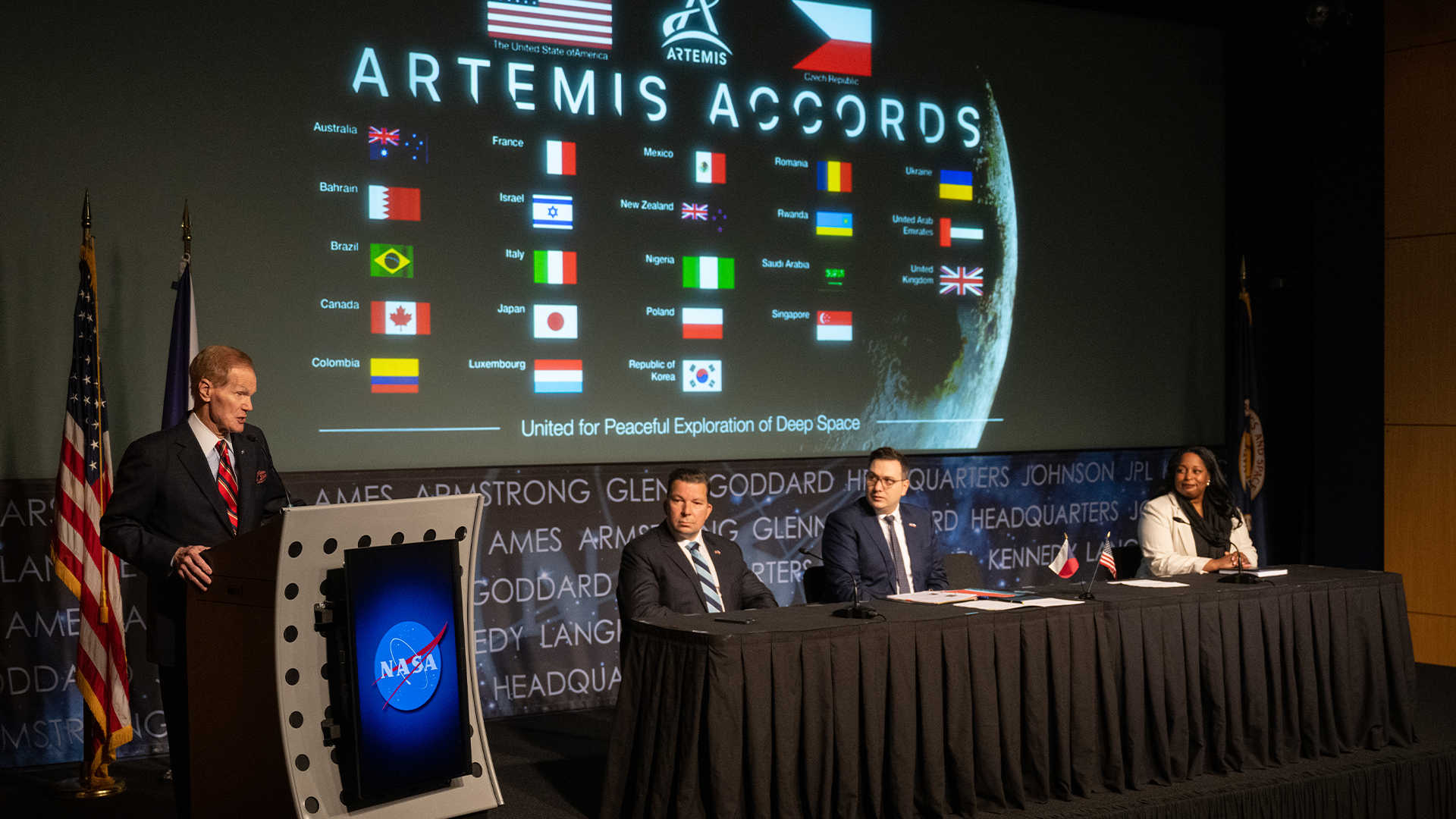'The law is way behind the time': Mining asteroids and the moon remains a huge legal gray area
Can we mine the moon and asteroids? NASA wants to make it happen, but it's still a huge legal gray area, experts say.

Mining the moon and asteroids could be worth trillions upon trillions of dollars, and several companies have popped up with that mission in mind.
But is space mining technically legal? For asteroids, the answer is probably "yes," but for the moon, it's complicated, experts say.
In 1967, 110 countries, including the U.S., Russia and China, signed a treaty stating that no "sovereigns" can claim ownership of the moon. However, this "Outer Space Treaty" (OST) does not explicitly prohibit companies or individuals from extracting and owning resources from space, Michelle Hanlon, a professor of space law at the University of Mississippi School of Law, told Live Science.
Related: Undiscovered 'minimoons' may orbit Earth. Could they help us become an interplanetary species?
"As a lawyer, I can point out all of the gray right there," said Hanlon, who is also the CEO & president of For All Moonkind, a nonprofit that aims to protect certain sites on the moon from development. "There's a huge argument to be made that a private entity or an individual can claim property."
However, some legal scholars argue the OST's broad "sovereign" language could technically be extended to businesses, which would mean companies are barred from mining the moon, at least.
Since the OST was signed, several governments have taken space-mining matters into their own hands. In 2015, the U.S. Senate passed the SPACE act, a domestic bill that grants U.S. citizens the right to claim resources from space, saying: "commercial recovery of an asteroid resource or a space resource shall be entitled to any asteroid resource or space resource obtained."
Get the world’s most fascinating discoveries delivered straight to your inbox.
There was a "huge outcry" after this bill passed, and many countries accused the U.S. of acting unilaterally, Hanlon said. And in any case,a U.S. law cannot be enforced in areas beyond its jurisdiction.
But that hasn't stopped other countries from hopping on the bandwagon: In 2017, the government of Luxembourg passed a bill giving companies the rights to extract and keep resources from celestial bodies, and Japan and the United Arab Emirates have followed suit.
Rather than leaving every nation to its own devices, NASA and the U.S. State Department proposed an international set of space exploration guidelines in 2020 known as the Artemis Accords — a multilateral initiative to return humans to the moon by 2026 that was originally co-signed by seven other nations. These Accords take the Outer Space Treaty one step further: By signing, countries agree to the possibility of granting rights over space resources in their "safety zone" on the moon, which would be established to avoid conflict between different nations, international lawyers say. Russia has spoken out against this U.S.-led agreement, but 35 countries have signed on as of Feb. 2024.
However, any truly binding international law must go through the United Nations, Hanlon said. That could be on the horizon: A UN committee dedicated to the "peaceful uses of outer space," is set to meet in April in Vienna to discuss space resource extraction.
"Part of our mandate is to examine the existing governance framework, and see what that has to say on the idea of space resource activities," Steven Freeland, an Emeritus Professor at Western Sydney University School of Law in Australia and vice chair of the working group tasked with analyzing legal issues surrounding space resource utilization, told Live Science. The group aims to develop an initial set of principles for how space mining might look, which would then be sent for approval by more than 100 UN countries part of the committee before it reaches the General Assembly, the main policy-making wing of the international organization.
Until then, many questions remain, including whether mining the moon will have the same laws as asteroid mining, Hanlon said.
"In many ways, [the law] is way behind the times," Hanlon said. "But that's where we are right now."

Kiley Price is a former Live Science staff writer based in New York City. Her work has appeared in National Geographic, Slate, Mongabay and more. She holds a bachelor's degree from Wake Forest University, where she studied biology and journalism, and has a master's degree from New York University's Science, Health and Environmental Reporting Program.



